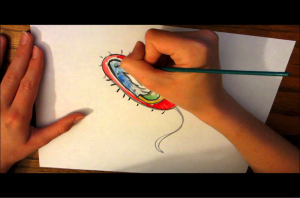Our bio-ground project is taking place in Charlottesville, Virginia in the surrounding areas of the University of Virginia. The main focus behind this project is to find and identify the type of microorganisms that inhabit the areas where students, faculty and visitors frequently travel by. In order to do so, our group has been divided into subgroups destined to take samples in the different means of transportation present at UVA, which range from samples in car and bicycle and bus tires, and even the shoes used for walking to class. When discussing about biophilic cities/locations usually the factors discussed tend to be visually identifiable (i.e parks and rooftops), however microorganisms and smaller living organisms are also affected by the eco-friendliness of every location. The goal behind this study is to identify the type of eukaryotic organisms that the inhabitants in UVA come into contact with on a regular basis.
Once the samples have been collected the macroscopic survey will be ready to begin. In order to asses the different samples, petri dishes, vials, pipettes and other lab materials will all be tools of assistance to utilize for better comprehension and overall procedure in the lab. Each one in the group will be responsible to portray to the rest of the team members with their findings in each sample. To do so, we will be drawing whatever is observed through the microscopic view. For the drawings it is key to use a well functioning pencil and a collection of color pencils to better portray shades or variations in coloring, as seen Figure 1.
Figure 1. A Drawing of a Bacteria Cell. maxresdefault.jpg
Figure 2. Examples of Drawings of Microinvertebrates. Teachengineering.org
The drawings will be done in the lab, and then the group will work together to have a cohesive understanding of the drawings. We envision the most challenging part of the process will be to identify the individual organisms, but an accurate portrayal will be key to surpass this stage in the methods. The drawings will then be compared and analyzed as a group to get an accurate identification of every individual.
Once the individuals have been identified, it will be time to start the written report and the possible conclusions that could be reflected from our findings. Our ultimate goal is, that with the proper identification, we will be able to know which species of micro invertebrates are more commonly seen, and how these species might be affecting the city we live in. Micro invertebrates are usually forgotten by the inhabitants of every city, even though they undeniably form a part of our every day life, and this is what this study is aiming to stop.
Post by Felipe Gomez

